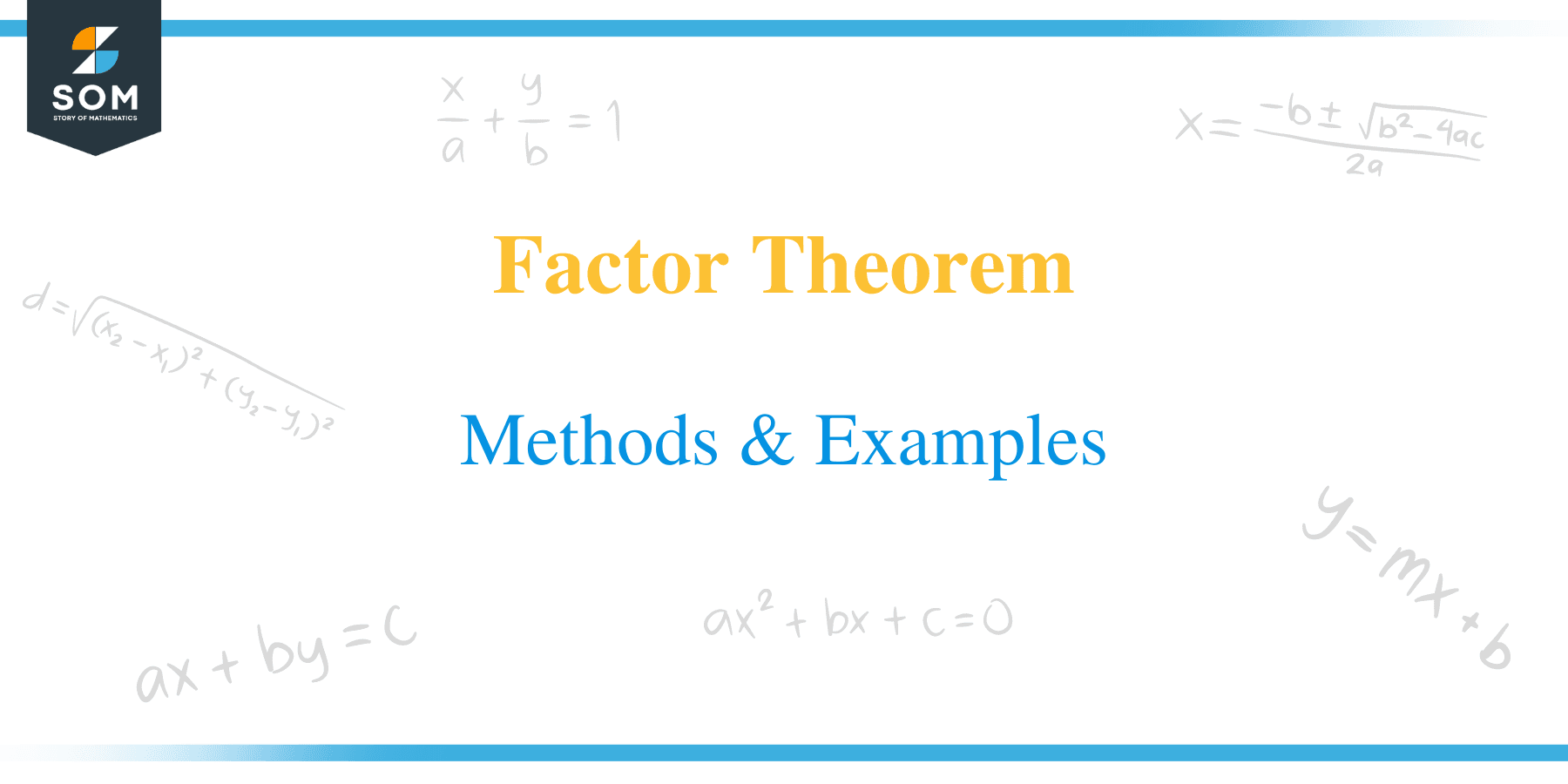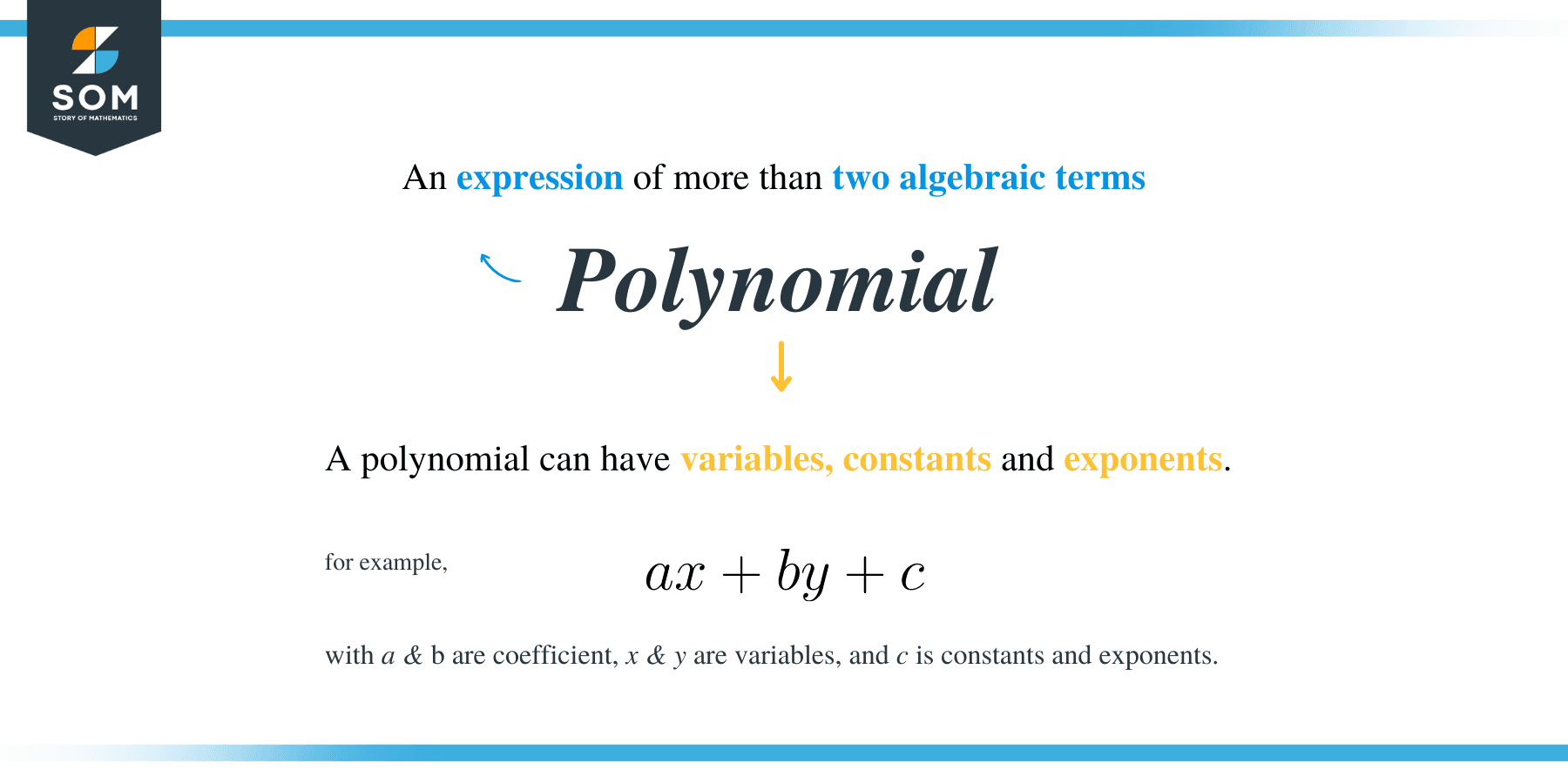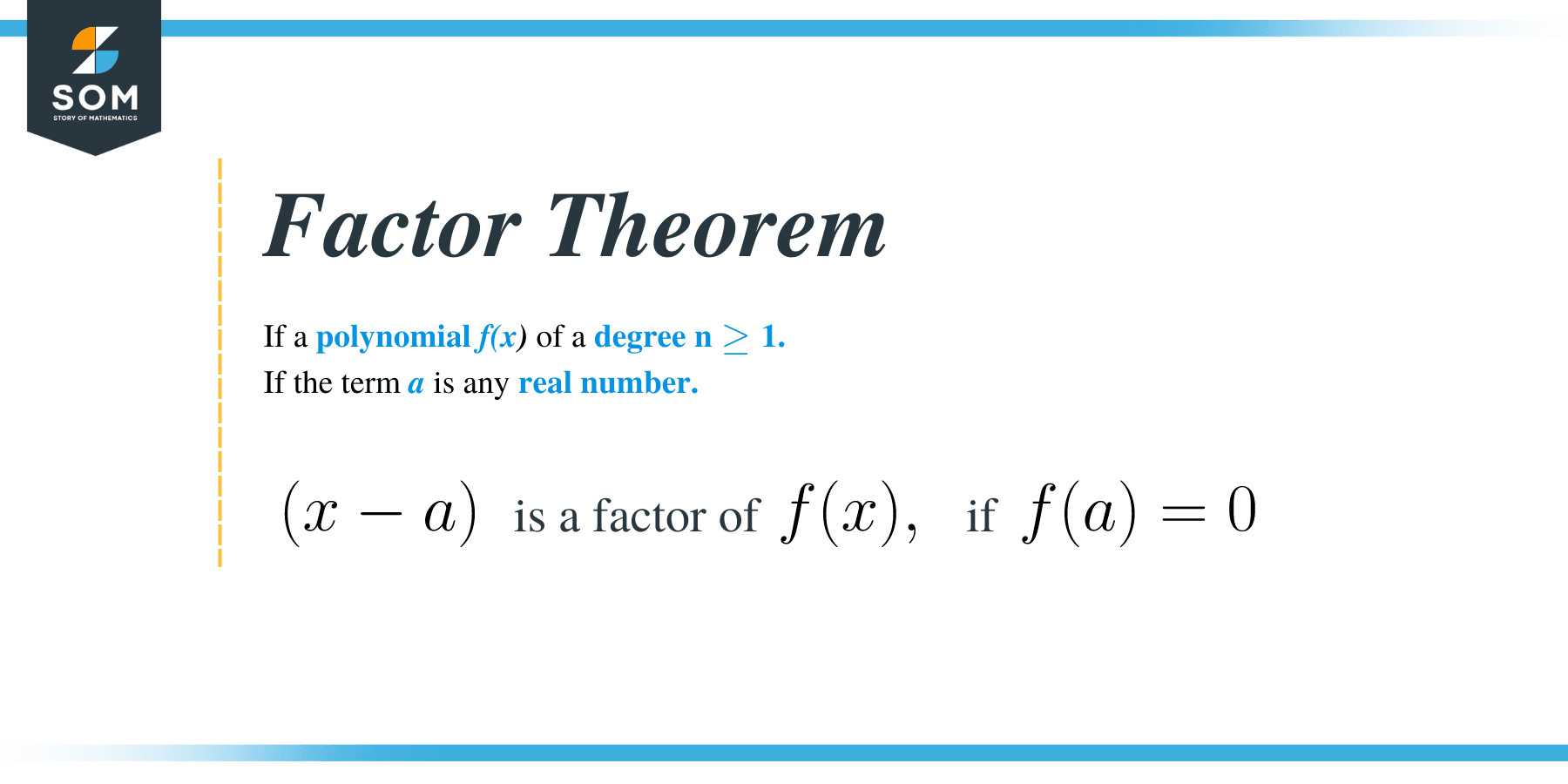- Home
- >
- Factor Theorem – Method & Examples
Factor Theorem – Methods & Examples
 A polynomial is an algebraic expression with one or more terms in which an addition or a subtraction sign separates a constant and a variable.
A polynomial is an algebraic expression with one or more terms in which an addition or a subtraction sign separates a constant and a variable.
The general form of a polynomial is axn + bxn-1 + cxn-2 + …. + kx + l, where each variable has a constant accompanying it as its coefficient.
Now that you understand how to use the Remainder Theorem to find the remainder of polynomials without actual division, the next theorem to look at in this article is called the Factor Theorem.
We will study how the Factor Theorem is related to the Remainder Theorem and how to use the theorem to factor and find the roots of a polynomial equation. But, before jumping into this topic, let’s revisit what factors are.
A factor is a number or expression that divides another number or expression to get a whole number with no remainder in mathematics. In other words, a factor divides another number or expression by leaving zero as a remainder.
For example, 5 is a factor of 30 because when 30 is divided by 5, the quotient is 6, which a whole number and the remainder is zero. Consider another case where 30 is divided by 4 to get 7.5. In this case, 4 is not a factor of 30 because when 30 is divided by 4, we get a number that is not a whole number. 7.5 is the same as saying 7 and a remainder of 0.5.
What is a Factor Theorem?
 Consider a polynomial f (x) of degree n ≥ 1. If the term ‘a’ is any real number, then we can state that;
Consider a polynomial f (x) of degree n ≥ 1. If the term ‘a’ is any real number, then we can state that;
(x – a) is a factor of f (x), if f (a) = 0.
Proof of the Factor Theorem
Given that f (x) is a polynomial being divided by (x – c), if f (c) = 0 then,
⟹ f(x) = (x – c) q(x) + f(c)
⟹ f(x) = (x – c) q(x) + 0
⟹ f(x) = (x – c) q(x)
Hence, (x – c) is a factor of the polynomial f (x).
Hence, the Factor Theorem is a special case of Remainder Theorem, which states that a polynomial f (x) has a factor x – a, if and only if, a is a root i.e., f (a) = 0.
How to use the Factor Theorem?
Let’s see a few examples below to learn how to use the Factor Theorem.
Example 1
Find the roots of the polynomial f(x)= x2 + 2x – 15
Solution
f(x) = 0
x2 + 2x – 15 = 0
(x + 5) (x – 3) = 0
(x + 5) = 0 or (x – 3) = 0
x = -5 or x = 3
We can check if (x – 3) and (x + 5) are factors of the polynomial x2 + 2x – 15, by applying the Factor Theorem as follows:
If x = 3
Substitute x = 3 in the polynomial equation/.
f (x)= x2 + 2x – 15
⟹ 32 + 2(3) – 15
⟹ 9 + 6 – 15
⟹ 15 – 15
f (3) = 0
And if x = -5
Substitute the values of x in the equation f(x)= x2 + 2x – 15
⟹ (-5)2 + 2(-5) – 15
⟹ 25 – 10 – 15
⟹ 25 – 25
f (-5) = 0
Since the remainders are zero in the two cases, therefore (x – 3) and (x + 5) are factors of the polynomial x2 +2x -15
Example 2
Find the roots of the polynomial 2x2 – 7x + 6 = 0.
Solution
First factorize the equation.
2x2 – 7x + 6 = 0 ⟹ 2x2 – 4x – 3x + 6 = 0
⟹ 2x (x – 2) – 3(x – 2) = 0
⟹ (x – 2) (2x – 3) = 0
⟹ x – 2 = 0 or 2x – 3 = 0
⟹ x = 2 or x = 3/2
Hence, the roots are x = 2, 3/2.
Example 3
Check whether x + 5 is a factor of 2x2 + 7x – 15.
Solution
x + 5= 0
x = -5
Now substitute the x= -5 into the polynomial equation.
f (-5) = 2 (-5)2 + 7(-5) – 15
= 50 – 35 – 15
= 0
Hence, x + 5 is a factor of 2x2 + 7x – 15.
Example 4
Determine whether x + 1 is a factor of the polynomial 3x4 + x3 – x2 + 3x + 2
Solution
Given x + 1;
x + 1 = 0
x = -1
Substitute x = -1 in the equation; 3x4 + x3 – x2 + 3x + 2.
⟹ 3(–1)4 + (–1)3 – (–1)2 +3(–1) + 2
= 3(1) + (–1) – 1 – 3 + 2 = 0
Therefore, x + 1 is a factor of 3x4 + x3 – x2 + 3x + 2
Example 5
Check whether 2x + 1 is a factor of the polynomial 4x3 + 4x2 – x – 1
Solution
⟹ 2x + 1 = 0
∴ x = -1/2
Substitute x = -1/2 in the equation 4x3 + 4x2 – x – 1.
⟹ 4( -1/2)3 + 4(-1/2)2 – (-1/2) – 1
= -1/2 + 1 + ½ – 1
= 0
Since, the remainder = 0, then 2x + 1 is a factor of 4x3 + 4x2 – x – 1
Example 6
Check whether x + 1 is a factor of x6 + 2x (x – 1) – 4
Solution
x + 1 = 0
x = -1
Now substitute x = -1 in the polynomial equation x6 + 2x (x – 1) – 4
⟹ (–1)6 + 2(–1) (–2) –4 = 1
Therefore, x + 1 is not a factor of x6 + 2x (x – 1) – 4
